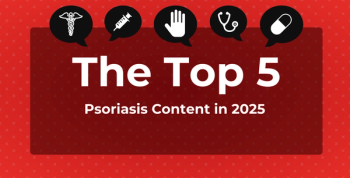
Different Bruton Tyrosine Kinase Inhibitors Bring Distinct Changes to Full-Length BTK
Key Takeaways
- BTK inhibitors have transformed B-cell malignancy treatment, with distinct resistance mechanisms linked to specific inhibitors.
- Covalent inhibitors often lead to BTK C481 mutations, while non-covalent pirtobrutinib results in different mutations.
The study offers insights on how to counteract resistance to Bruton tyrosine kinase (BTK) inhibitors.
A new analysis shows how Bruton tyrosine kinase (BTK) inhibitors affect full-length BTK conformation by investigating the distinct resistance mechanisms that arise in patients treated with the therapies.
The findings could offer insights that help clinicians better understand how to treat individual cases of chronic lymphocytic leukemia (CLL) and similar diseases, according to the report published in
Corresponding author Amy Andreotti, PhD, of Iowa State University, and colleagues wrote that the decade since the introduction of ibrutinib (Imbruvica) has seen a dramatic shift in the treatment of B-cell malignancies and led to the development of a handful of additional BTK inhibitors (BTKi’s), including acalabrutinib (Calquence), zanubrutinib (Brukinsa), tirabrutinib (Velexbru), pirtobrutinib (Jaypirca) and orelabrutinib (Hibruka).
“All of the clinically approved BTKi (with the exception of pirtobrutinib) are covalent active site inhibitors that bind to BTK C481 residue within the kinase active site,” they explained. “Pirtobrutinib is currently the first and only clinically approved non-covalent BTK active site inhibitor.”
As the range of BTKi options has grown, so has the need to better understand which particular BTKi is best for a specific patient or disease state, they said.
“While toxicity, specificity, and other criteria are used in these clinical comparisons, a molecular level characterization of the interaction of the inhibitor with full-length BTK is lacking and could be key to understanding these differences. In a previous study, Andreotti and colleagues examined the allosteric effects of ibrutinib upon binding to BTK using nuclear magnetic resonance (NMR) and hydrogen-deuterium exchange mass spectrometry (HDX-MS).2
“Ibrutinib binding to the BTK kinase active site leads to a shift in the conformational ensemble of full-length BTK towards an open conformation where the regulatory SRC homology (SH3 and SH2) domains are released from the ‘back’ surface of the kinase domain, disrupting the closed autoinhibited conformation of the full-length protein,” they explained.
Andreotti and colleagues said allosteric conformational changes to drug binding have been shown to alter protein-ligand interactions in other systems with functional consequences. Yet, they explained the full impact of the range of BTKi’s on the conformation of full-length BTK has remained unknown.
Additionally, the investigators noted that mutation-linked resistance to BTKi is common, typically developing in patients about 2 years after initiation of therapy.
“Interestingly, the specific resistance mutations that develop in Btk seem to be dependent on the specific BTKi used,” they explained.
About 90% of patients with CLL treated with ibrutinib or acalabrutinib develop mutations in BTK C481, while patients receiving the reversible inhibitor pirtobrutinib develop kinase active site mutations like BTK T474I and L528W.
In the new report, the investigators sought to better understand how acalabrutinib, zanubrutinib, tirabrutinib, and pirtobrutinib affect the conformation of full-length BTK.1 They found that each has distinct impacts on the conformational equilibrium of full-length BTK. For instance, acalabrutinib, zanubrutinib, and tirabrutinib shift the conformational ensemble of full-length BTK by destabilizing the conformation of the SH3 and SH2 domains.
“In marked contrast, pirtobrutinib led to the stabilization of the compact autoinhibited conformation of full-length BTK,” they wrote.
The investigators also examined the BTK resistance mutations T4741 and L528W. They found that the BTK T4741 mutation disrupts binding to zanubrutinib, tirabrutinib, pirtobrutinib, and acalabrutinib, but not to ibrutinib and fenebrutinib, meaning the latter 2 therapies might be options for patients that develop the mutation.
“The BTK L528W mutant is catalytically inactive, hence treatment with any BTK active site inhibitor is futile,” they wrote. “Previous studies have shown that the similarly inactive BTK C481Y/F mutant can be suppressed by the use of PROTACS (proteolysis targeting chimera) to induce degradation of the full-length protein.”3
Yet, they said their data suggest the BTK L528W mutation maintained binding to fenebrutinib, meaning PROTACS based on fenebrutinib might be effective. Andreotti and colleagues said as more BTKi’s become available, these sorts of analyses will be critical to better understand optimal treatment strategies for patients.
References
1. Joseph RE, Wales TE, Jayne S, et al. Impact of the clinically approved BTK inhibitors on the conformation of full-length BTK and analysis of the development of BTK resistance mutations in chronic lymphocytic leukemia. Preprint. bioRxiv. 2024;2023.12.18.572223. Published 2024 Oct 10. doi:10.1101/2023.12.18.572223
2. Joseph RE, Amatya N, Fulton DB, Engen JR, Wales TE, Andreotti A. Differential impact of BTK active site inhibitors on the conformational state of full-length BTK. Elife. 2020;9:e60470. Published 2020 Nov 23. doi:10.7554/eLife.60470
3. Dhami K, Chakraborty A, Gururaja TL, et al. Kinase-deficient BTK mutants confer ibrutinib resistance through activation of the kinase HCK. Sci Signal. 2022;15(736):eabg5216. doi:10.1126/scisignal.abg5216
Newsletter
Stay ahead of policy, cost, and value—subscribe to AJMC for expert insights at the intersection of clinical care and health economics.








































